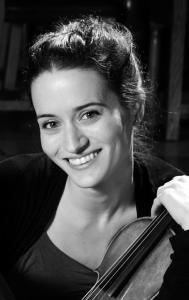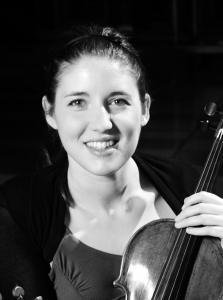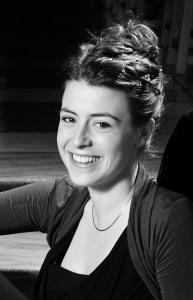23 March 2011
The Pilgrimage of the Evangelists, Part Two

The Evangelists are the world’s only played matched set of string quartet instruments by a major maker.
Swiss Global Artistic Foundation President Heather de Haes remarks, "Each instrument is outstanding in its own right, but when heard as a group their collective sound assumes an extraordinary beauty and radiant energy."
The instruments were acquired in April 2008 with a view to contributing to the artistic growth of emerging string quartets of the first rank.
______________________________________________________________________
The Pilgrimage of the Evangelists, Part Two
 |
"Becoming acquainted with St Jean over the last 8 months has been an interesting and challenging journey and one that is ongoing. We all remarked initially on the sheer increase in volume compared to our previous instruments. In fact the brightness and brilliance of St Jean was such a change that I found using an earplug helped to focus my ear and get used to the extra resonance. Having experimented with a range of strings and in many combinations, I felt that St Jean became too strident with a higher tension string on, so in an attempt to coax more tonal variety out, I am currently trying lower tension gut strings on the D and G. This in combination with a newly built bridge from Beares has made St Jean less temperamental with more consistency in the resonance between strings. There is still much to discover, but I feel very grateful to have an opportunity to play a fantastic violin that is forcing me to explore,improve and refine so many aspects of my technique and musicianship." -- Sara Wolstenholme violin 1 |
|
"The first thing that struck all of us when we played these instruments was the immediacy with which they spoke compared to our other instruments. Once we had The Evangelists to ourselves we took some time apart to find our own way with the instruments. St Marc is different to the others, he reminds me of a morphing entity. His natural tendency is to flit between personas, indeed when we have listenned back to recordings he oftensounds like the cello or viola, which is fairly unique for a violin! These colours allow for a creative palate but this changable tone is in contrast to the other instruments in the Quartet which are very much in their own soundworld. With this in mind Sara and I went to Beares to experiment with the set up to see if we could find a better balance for the two violins, soften St Jean and brighten St Marc. We realised that to try and make Marc sound like the others in an immediate way just wouldn't work. His natural depth of sound needed to be encouraged, to hopefully allow the upper registers of the violin to gradually wake up. As with any instrument one has to search for different tonal qualities. The key here though is to keep on nuturing that particular quality so that it becomes a natural part of the instrument's voice. Having not been played for at least 35 years it is exciting to be reawakening St Marc, who knows what the next 35 years will bring?" -- Natalie Klouda violin 2 |
 |
 |
"Getting to know St Mattieu, the viola of The Evangelists, has been a fascinating and rewarding experience. When we played them for the first time the immediate differencewith my own viola was it's size, as the instrument I was playing on before was only an inch or so bigger than a violin. However, it was the incredibly different sound under my ear that threw me off balance. The power and quality of the instrument was immediate from the start but I was used to a more subtle depth and warmth of tone. The direct, even harsh sound of St Mattieu certainly intimidated me that first time… The first day we were given the Evangelists I played both my own viola and St Mattieu to some friends to gauge a reaction (I was still bewildered as to what I was really projecting). I couldn't help being excited by the power and sharp soloisticqualities it had. I knew then it would be the softer passages and more subtle colours where the struggle would begin! It was fortunate that we received The Evangelists in July when our quartet had scheduled a few weeks to ourselves. The timing was perfect as we could all explore and acquaint ourselves with our instruments without comparison and constraint. I soon realised, despite being made as a set for quartet, St Mattieu certainly wasmade in it's own right and would not have been made purely to blend with others. The hardest part, from a technical and physical point of view was to resist the character of the instrument. Instead of adding intensity and force, I learnt it was more a case of controlled intention. Sustaining with right hand power only crushed the sound so with much difficulty I learnt how each stroke required an immediate and focused start but with a natural release to allow the instrument to speak for itself. This was only the start of the process and since then we have all tried a variety of strings and bows. I now play a bow with a heavier tip while Sara and Lydia (1st violin and 'cello) use gut strings to balance the bright and often overpowering strident qualities of their instruments. It is an ongoing process of changes and experiments that will continue for our two years with the set and I look forward to the months ahead." -- Ruth Gibson viola |
|
"Getting to know St Luc has been a fascinating time for me as a cellist and member of a string quartet. The cello I was playing on was an old English cello with a gentle and mellow sound, so at first the immediacy of St Luc's bright and strong palette was a huge contrast to what I was used to playing. What was incredible was the evenness of tone across all the strings – I had never played a cello with such strong D and G strings! Despite the obvious advantages of playing an instrument with such a powerful tone, I began to feel that St Luc's setup was not allowing the full spectrum of colours to emerge. The A string was bright but bordered on tight especially higher up in thumbposition – where you expected the sound to bloom and open it would close in and tighten up the higher you climbed which was bewildering for such an obviously strong instrument. At the other end of the cello the C string was powerful but somehow not warm, and I began to find that I was having trouble creating a bed of sound for my colleagues in the Quartet to play on. The cello has to put its arms around the sound world of the Quartet and it seemed St Luc wanted to play on his own! With this in mind and in consultation with the rest of the Quartet it seemed a good idea to try and take some of the tension off the bridge on the lower strings to free them up andallow the A string to sing – I tried a few metal and synthetic strings without much success and eventually bit the bullet and changed over to Pirastro Oliv's – covered gut strings. The difference this has made to the cello is incredible, and a whole new instrument has emerged over the past couple of months. Without losing the strength which is so valuable in the instrument it now has a warmer, rounder tone and resonates more freely throughout all the registers. In addition although the strings still have equal strength they now have different textures which opens up a whole new set of tonal possibilities. The more I get to know it in its new guise the more excited I am by the possibilities of this cello. You can never go far enough in trying to find new sound worlds and colours, and I am lucky to have this time to experiment on such a fine instrument." -- Lydia Shelley cello |
 |


